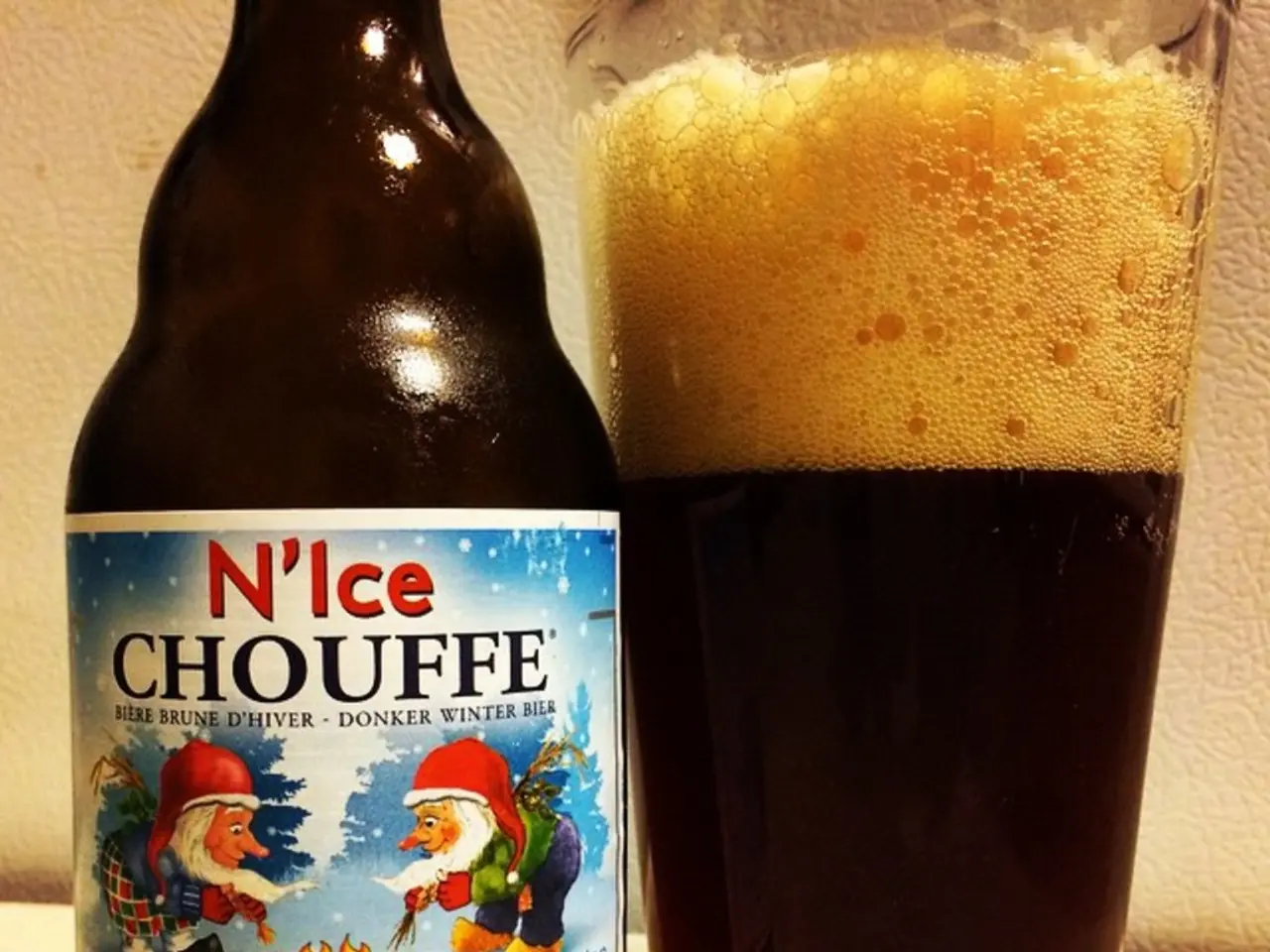Perfecting Your Pint: Explored are the Various Filtration Methods forcrafting ideal Beer
In the world of brewing, the art of beer filtration plays a crucial role in enhancing the quality and consistency of the final product. This process, which occurs after fermentation and clarification, is a vital step that ensures the beer's taste, appearance, and shelf life meet high standards.
Simplest Methods for Beer Filtration
One of the simplest and most affordable methods for filtering beer is using a funnel with a fine mesh strainer. This method effectively removes larger particles like hop debris and some yeast cells, paving the way for more refined filtration processes.
Another method, cold filtering, involves chilling the beer to near-freezing temperatures. This process causes haze-causing proteins and polyphenols to clump together and settle out, resulting in a clearer beer.
Advanced Filtration Techniques
More advanced filtration methods offer increased efficiency and control over the filtration process. Cartridge filters, housed in a filter housing and used with a pump, provide greater control over the flow rate and pressure, making them ideal for commercial breweries.
In-line sensors are also commonly used to continuously monitor the quality of the filtered beer, allowing for real-time adjustments to the process as needed.
Common Filtration Methods
- Pre-filtration: This method uses coarse filters or pre-filters to remove larger particulates early, protecting finer filters downstream and improving overall filter life. However, it does not remove microorganisms or finer haze particles and must be followed by finer filtration steps.
- Plate or Inline Filters: These filters are efficient at removing sediment and particulate matter, helping to clarify the beer and achieve the desired clear appearance, especially for ales. They can handle high flow rates and are relatively simple to operate, but may strip out some flavor compounds if overused and require regular cleaning to avoid bacterial growth.
- Sterile Membrane Filtration: This method uses fine pore sizes to remove micro-organisms without heat, preserving nuanced flavor and aroma better than pasteurisation. It also consumes less energy, aligning well with sustainability goals. However, it requires precise process control and expertise to avoid clogging and ensure effectiveness, and has a higher initial equipment cost.
- Fining Agents: Chemical additives like Irish moss promote sedimentation and help clarify beer before filtration, reducing filter load. However, some consumers prefer fewer additives, and effectiveness can vary based on beer style.
- Pasteurisation: Although not a filtration method, pasteurisation provides consistency and longer shelf life by killing microbes with heat. Widely used by mass producers, it can alter flavor and aroma, potentially less desirable for craft brewers focused on quality retention.
Choosing the Right Filtration Method
The choice of filtration method depends on the brewery’s scale, beer type, desired shelf life, and brand positioning. For example, craft brewers often prioritize flavor retention with sterile filtration, whereas mass producers may prefer pasteurisation for consistency. Filters need to be robust, hygienic, and matched to the brewery’s microbial load and flow requirements.
Homebrewing and Beer Filtration
Homebrewers also have a wide range of filtering options, catering to varying levels of experience, brewing volumes, and budgets. Smaller-scale commercial filtration systems, such as crossflow or depth filters, can be used by homebrewers to achieve professional-level clarity in their finished product, although they are more expensive and require a larger initial investment.
Automated systems are also used in breweries to monitor and control various aspects of the filtration process, ensuring consistent results and reducing labor costs. Breweries may use a combination of filtration methods, such as cold filtering followed by surface filtration or crossflow filtration, to achieve the desired clarity and stability in their products.
In conclusion, the filtration process is a critical step in beer production, ensuring the taste, appearance, and shelf life of the final product meet high standards. Whether it's a large-scale commercial brewery or a homebrewer's kitchen, the art of beer filtration is an essential component of crafting a perfect pint.
In the realm of homebrewing, technology can also play a significant role by offering automated systems for monitoring and controlling various aspects of the filtration process, aiming for consistent results and reducing labor costs.
Advanced data-and-cloud-computing technology can even become a valuable tool for homebrewers, empowering them to analyze and optimize their brewing process, ensuring their homemade craft beer maintains the quality and consistency of professionally brewed beers.




